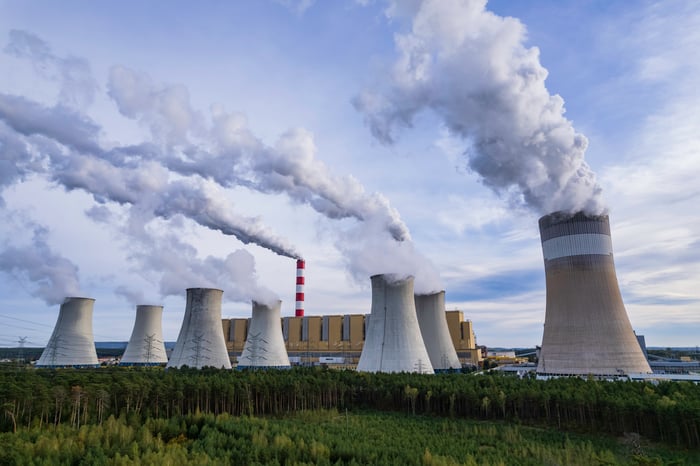Crude Oil Prices Surge Amid Sanctions and Strong U.S. Job Growth
Today, February WTI crude oil (CLG25) rose by +1.92 (+2.60%), while February RBOB gasoline (RBG25) increased by +0.0344 (+1.70%).
Significant Price Increases for Crude and Gasoline
Crude and gasoline prices are sharply up, with crude hitting a three-month high and gasoline reaching a two and three-quarter month high. The increase in crude prices can be attributed to new U.S. sanctions on Russian oil, alongside a stronger-than-expected U.S. December payroll report that suggested a robust economy supporting energy demand.
New U.S. Sanctions on Russia Boost Crude Prices
The recent sanctions target Russia’s oil giants, Gazprom Neft and Surgutneftgas, which exported around 970,000 bpd in the first ten months of 2024, making up about 30% of Russia’s tanker flow, according to Bloomberg data. The U.S. measures also focus on insurers and traders associated with numerous tanker shipments.
Positive Employment Report Fuels Energy Demand
The December nonfarm payrolls showed an increase of +256,000, surpassing the anticipated growth of +165,000 and marking the most significant rise in nine months. Additionally, the unemployment rate unexpectedly dipped by -0.1% to 4.1%, highlighting a stronger labor market compared to the anticipated steady rate at 4.2%.
Russian Crude Exports Decline
Supporting the rise in crude prices, Russian crude oil exports have decreased. Bloomberg’s weekly data indicated a drop of -190,000 bpd, bringing the total to 2.88 million bpd as of January 5.
Saudi Arabia Signals Stronger Demand
Crude prices received additional support when Saudi Arabia raised its crude prices for Asian buyers by 60 cents per barrel for February delivery, which was well above the expected 10 cents increase, indicating a tight supply forecast in its primary market.
Decreasing Crude Oil Storage on Tankers
Vortexa reported a positive outlook for oil prices as crude stored on stationary tankers declined significantly by -33% week-over-week, totaling 48.02 million barrels for the week ending January 3.
Future Sanctions Could Impact Global Supply
Future U.S. sanctions on Iranian and Russian exports may further restrict global oil supplies, which would likely lead prices to rise. Mike Walz, President-elect Trump’s pick for national security adviser, has pledged a return to aggressive pressure on Iran.
OPEC+ Production Adjustments
Last month, crude oil found backing after OPEC+ decided to delay a planned increase in production by +180,000 bpd from January to April, committing to unwind production cuts more cautiously than previously outlined. The United Arab Emirates (UAE) also announced a delay in its planned 300,000 bpd production increase. OPEC+ had initially intended to restore 2.2 million bpd of crude output through monthly increments until late 2025, but this timeline has now been pushed back to September 2026. OPEC’s December crude production showed a decrease of -120,000 bpd, totaling 27.05 million bpd.
Slowdown in Chinese Crude Demand
On a less favorable note, China’s crude oil demand has weakened. Bloomberg data revealed that apparent oil demand in November fell by -2.14% year-on-year to 14.013 million bpd. For January to November, demand had decreased by -3.26% year-on-year, totaling 13.996 million bpd. China, known as the second-largest crude consumer globally, plays a crucial role in global energy dynamics.
U.S. Crude Oil Inventory Trends
According to the EIA report on Wednesday, U.S. crude oil inventories as of January 3 were -5.8% below the seasonal five-year average, while gasoline and distillate inventories were -1.4% and -4.8% below their averages, respectively. U.S. crude production decreased slightly by -0.1% week-over-week to 13.563 million bpd, trailing just below the record high of 13.631 million bpd set in early December.
Active U.S. Oil Rigs Decline
Last Friday, Baker Hughes reported a slight decline in active U.S. oil rigs, falling by -1 to 482 rigs. This figure remains above the 2-3/4 year low of 477 rigs from November 29. Over the past two years, the count has dropped from its peak of 627 rigs recorded in December 2022.
On the date of publication, Rich Asplund did not have (either directly or indirectly) positions in any of the securities mentioned in this article. All information and data in this article are solely for informational purposes. For more details, please view the Barchart Disclosure Policy here.
The views and opinions expressed herein are the views and opinions of the author and do not necessarily reflect those of Nasdaq, Inc.






